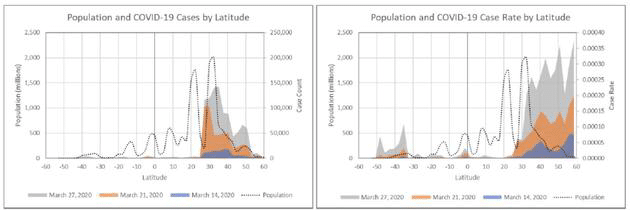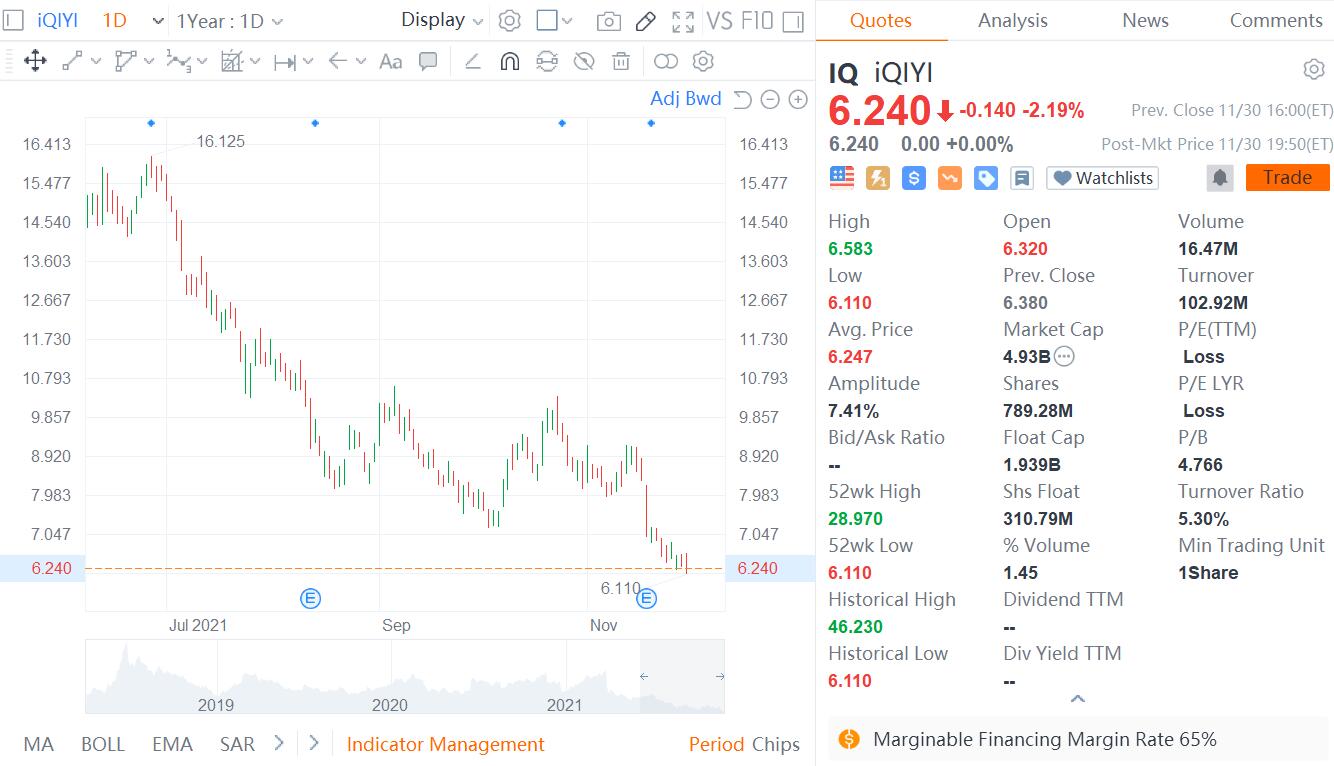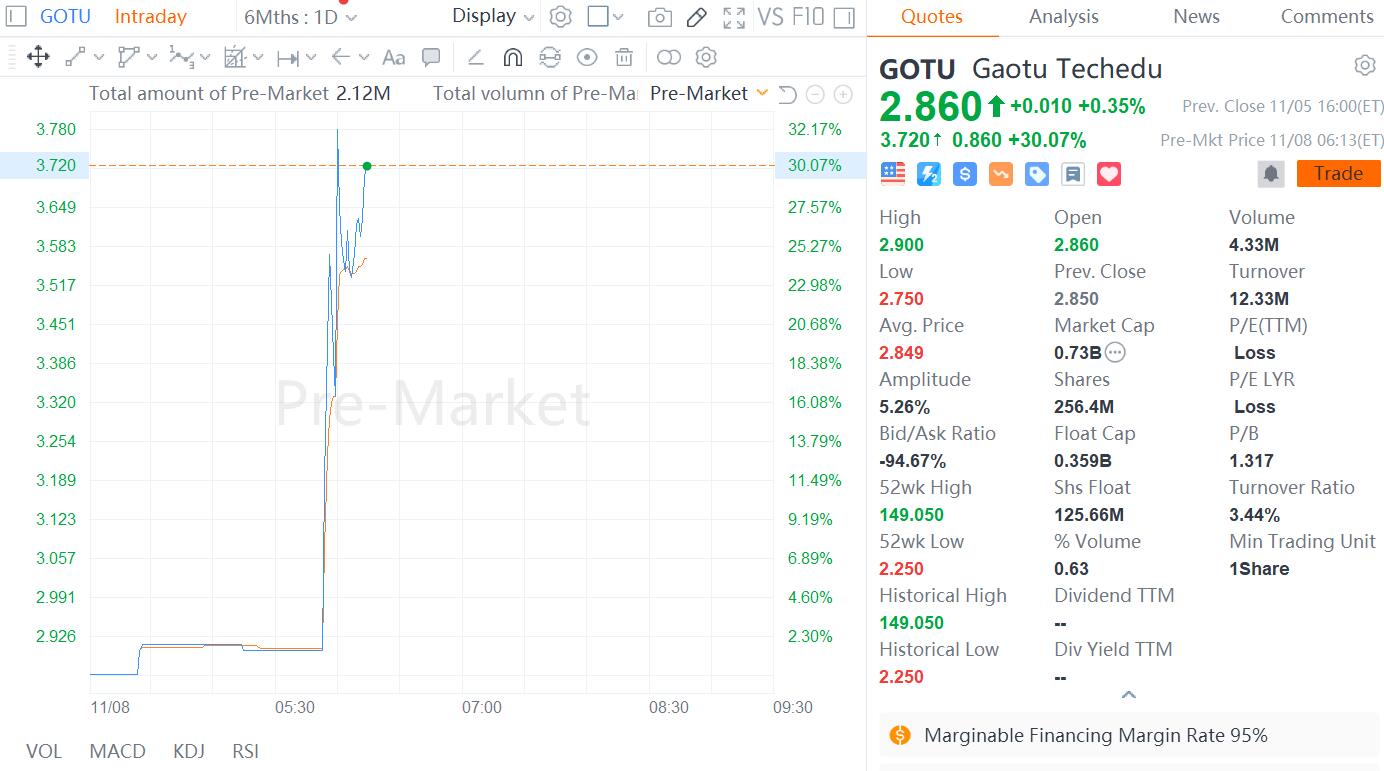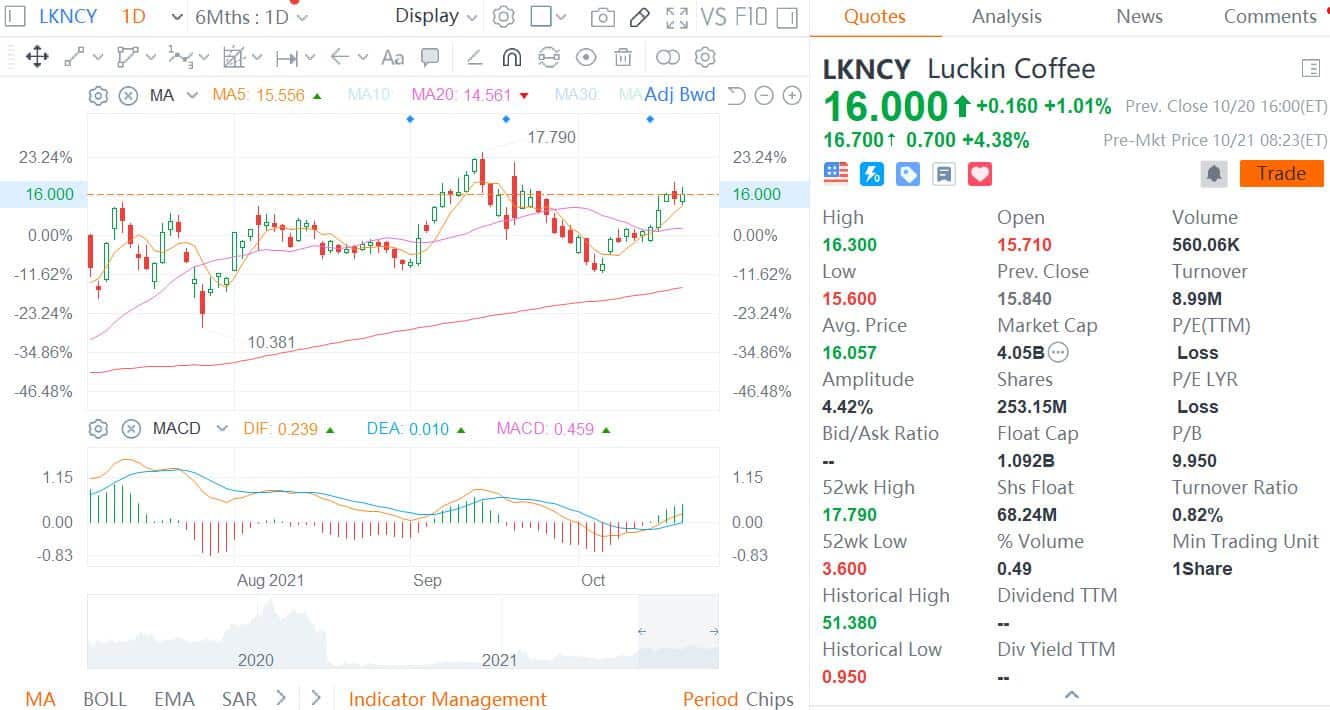The latest research shows that seasonal temperature changes may affect the propagation trajectory of COVID-19 in different parts of the world.
On April 12, the medical preprint platform medRxiv published a new regression analysis study online, pointing out that from the data in the middle and late March, 22.5 degrees Celsius or an important "breakpoint", the regional average maximum temperature when the temperature exceeds 22.5 degrees Celsius, the rate of confirmed cases of new coronavirus pneumonia will be greatly reduced.
Due to the difference in temperature and season, there is a correlation between the more serious COVID-19 epidemic and areas with 30 degrees or more north-south latitude.
The study is titled "Evidence that higher temperatures are associated with lower incidence of COVID-19 in pandemic state, cumulative cases reported up to March 27, 2020." Michael Triplett at the campus.
Regression analysis (regression analysis) refers to a statistical analysis method that determines the quantitative relationship between two or more variables. According to the type of relationship between independent and dependent variables, it can be divided into linear regression analysis and nonlinear regression analysis.
According to the data of cumulative diagnosis of new coronavirus pneumonia (COVID-19) from March 14 to March 27 of the World Health Organization, through multiple linear regression analysis and nonlinear regression analysis, Triplett found that the incidence and latitude of COVID-19 were 30 there is a connection between regions of degree or above.
Climate data also shows that the average maximum temperature exceeds about 22.5 degrees Celsius, and the incidence of new coronavirus pneumonia cases will be greatly reduced.
Triplett analyzed the World Health Organization's daily report on the diagnosis of new coronavirus pneumonia in countries from March 14 to March 27, 2020, and calculated the diagnosis rate of new coronavirus pneumonia in various countries based on the population data of the United Nations Statistics Division.
By obtaining the average (median) of the latitude and longitude of the northernmost, easternmost, southernmost, and westernmost points of each country, he assigned the population values according to latitude.
Subsequently, Triplett recorded the distribution of the average maximum temperature value at the latitude of the countries with new cases of new coronavirus pneumonia every day.
Global average maximum surface temperature data on March 14, March 21, and March 27, distributed by latitude.
In response to the data reported on March 27, the researchers used a multivariate linear regression analysis of the number of confirmed cases in different countries using the above-mentioned estimated population and average maximum temperature latitude distribution as predictors. The researchers also analyzed the situation where the latitude is higher or lower than 30 degrees under the condition of the same predictor.
Through a series of analyses, the researchers found that 30 degrees north-south latitude seems to be a dividing line, the area between 30 degrees north-south latitude is less affected by the new coronavirus pneumonia, and the number of confirmed cases and the diagnosis rate in the areas higher than 30 degrees latitude Is larger.
According to the change of the confirmed cases (left) and the diagnosis rate (right) according to the latitude distribution from March 14 to March 27, the changes of the diagnosis of viruses with latitudes above and below 30 degrees are clearly visible.
It is worth noting that, as can also be seen from the above figure, as of March 27, the incidence of cases seems to increase faster south of 30 degrees south latitude, probably because the temperature there is falling and is entering the autumn.
This increase initially indicates that the correlation between the epidemic situation and latitude is likely to be affected by temperature.
Through multiple linear regression analysis of population, temperature and latitude (above / below 30-degree latitude), the researchers believe that there is a significant relationship between the confirmed cases and the above factors.
In the regression model, the transformed R2 (generally used to evaluate the degree of agreement between the predicted value and the actual value, the closer the R2 value is to 1, indicating that the independent variable in the regression analysis explains the dependent variable better) is 84.61%, the latitude is The credibility of the categorical variable for cases below 30 degrees is about 84.7%.
The relationship between the global average maximum temperature and the confirmed cases and the diagnosis rate on March 14, March 21 and March 27, as the temperature increased, the diagnosis rate showed a downward trend, and the average maximum temperature reached 22.5 degrees Celsius The diagnosis rate can be kept at a very low level.
It can be seen that when the average maximum temperature is below 22.5 degrees Celsius, the number of confirmed cases and the diagnosis rate of new coronavirus pneumonia cases have increased, but as the temperature increases to 22.5 degrees Celsius, the diagnosis rate drops sharply. When the temperature is higher than 22.5 degrees Celsius, the diagnosis rate remains very low.
The study pointed out that it should also be noted that the high-growth areas of new coronavirus pneumonia cases warmed between March 14 and 27, and the temperature increased, but only the average maximum temperature reached 22.5 degrees Celsius. The rate of confirmed cases can reach a low level.
Above 22.5 degrees Celsius, the outbreak has developed slightly, but the growth rate of confirmed cases has slowed significantly.
In addition, the researchers found that the nonlinear regression of temperature and diagnosis rate can obtain the best fitting effect of all models.
The R2 value is as high as 93.78%, indicating that this factor is highly correlated with the development of the epidemic.
According to Triplett, according to the temperature prediction, there is a strong regional correlation between the incidence of COVID-19 cases and the average maximum surface temperature below 22.5 degrees Celsius, and the case diagnosis rate peaks when the average maximum surface temperature is about 7.5 degrees Celsius.
Triplett finally pointed out that although he determined the relationship between several variables and the diagnosis rate of the new coronavirus pneumonia, the geographical location and temperature could not explain the difference in infection rates at the local level.
These are some preliminary findings, which will support further countermeasure research on the new coronavirus and explore the relationship between the virus transmission rate and temperature and humidity.
It is generally believed that certain respiratory diseases (such as flu) have obvious seasonality. The outbreak of SARS (Severe Acute Respiratory Syndrome) in 2003 also showed its dependence on specific temperature and humidity.
With the development of new coronavirus epidemics, the relationship between virus and climate has received more and more attention.
Previously, on March 9, researchers from the Institute of Human Viruses of the University of Maryland School of Medicine and the Global Virus Network (GVN) Center of Excellence published research on the preprint platform SSRN. The east-west distribution is roughly along the 30 ° -50 ° north latitude corridor. This area has a similar temperature: 5 ° C-11 ° C, and a similar relative humidity (RH): 47% -79%.
However, Marc Lipsitch, a professor of epidemiology at Harvard University, said recently that it is clear that the warming of the weather will not prevent the spread of new coronaviruses, and believes that coronaviruses can continue to spread in hotter, humid environments.
The study warns that as the southern hemisphere moves from summer to autumn and winter, the number of new coronavirus pneumonia cases in the southern hemisphere will also increase.
A number of studies have so far indicated that even in warmer and humid areas, effective public health interventions should be taken to reduce the spread of new coronaviruses and protect vulnerable groups from infection.
Special Report: Fighting The New Coronavirus












